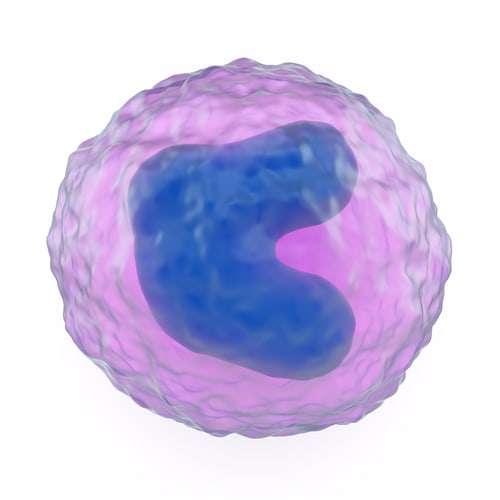 Monocytes are a type of white blood cell and a vital part of the innate immune system. Not only do they have the ability to detect infections and inflammation, but they can also differentiate into phagocytic macrophages with the ability to engulf and destroy foreign substances, including microbes.
Monocytes are a type of white blood cell and a vital part of the innate immune system. Not only do they have the ability to detect infections and inflammation, but they can also differentiate into phagocytic macrophages with the ability to engulf and destroy foreign substances, including microbes.
In the laboratory, researchers induce monocytes into pro-inflammatory macrophages by treating them with lipopolysaccharide (LPS), resulting in a heterogeneous population containing both adherent and nonadherent cells . In order to understand the molecular differences between these cell populations, Tarasova et al. looked for proteomic differences in these monocyte subpopulations and outlined their findings in a recent publication.1
The researchers cultured human monocytes using a THP-1 cell line that was originally derived from the peripheral blood of a patient with acute monocytic leukemia. The experimental design included four test groups:
(1) nonadherent LPS-treated cells
(2) adherent LPS-treated cells
(3) untreated nonadherent cells (used as a control)
(4) untreated adherent cells
Next, the team lysed cells and digested them with trypsin prior to mass spectrometry. For liquid chromatography and tandem mass spectrometry (LC−MS/MS) analyses, the team used an Easy-nLC chromatography system (Thermo Scientific) directly coupled online to a Q Exactive mass spectrometer (Thermo Scientific). The team used the UniProtKB/Swiss-Prot database (release 2012_06 [20 257 human sequences] or release 2014_10 [20 194 human sequences]), using the Mascot search engine v. 2.3 to search for previously discovered proteins.
The team used bioinformatic techniques to calculate the mean values of technical duplicates as well as principal component analysis and orthogonal projections to latent structures techniques. The researchers also measured the concentrations of cytokines and analyzed them using flow cytometry.
As a result of the proteomics workflow, Tarasova and colleagues identified and quantified 1,595 proteins. They noted adequate separations between the cell subpopulations. Looking at the proteomic changes in non-adherent cells following LPS stimulation, 70% of the upregulated proteins represented a response to cytokines, with the related pathways being significantly overrepresented. They determined non-adherent cells were activated not by LPS itself, but by the cytokines released from the LPS-activated cells.
When non-adherent LPS-treated cells were transferred into a new culture dish and incubated for 48 hours with fresh media, the fraction of adherent cells was five times less compared to that of the control (p=0.02). The researchers hypothesized that the attachment process prepares untreated cells for responses to stimuli differentiation. After treating adherent cells, the team recorded 100 upregulated proteins, with 50% involved in localization, interaction with environment and migration, and 27% involved in cell differentiation.
As an aside, the researchers found that both both the size and material of the culture dish surface on which the cells were incubated influenced the fraction of adherent cells and should be investigated further. As a whole, this work is useful in the discovery of immunotherapy candidates. Tarasova et al. conclude that adherent, LPS-treated cells would be more appropriate for use in tumor therapeutic applications.
Reference
1. Tarasova. N., et al. (2015) “Proteomics reveals a role for attachment in monocyte differentiation into efficient proinflammatory macrophages,” Journal of Proteome Research, 14(9) (pp. 3940–3947). doi: 10.1021/acs.jproteome.5b00659.
Post Author: Emily Humphreys. Emily has previous research experience in eye development, infectious diseases, and aging. Emily has been a regular contributor to Accelerating Science since 2012.
Leave a Reply